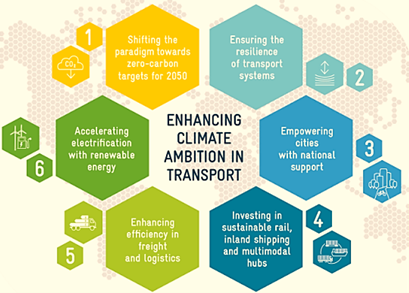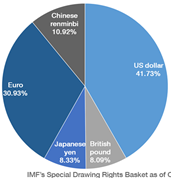Friday, 27th August 2021
North-Eastern Region (NER) District SDG Index Report 2021-22
In News
NITI Aayog and Ministry of Development of North-Eastern Region (M/DoNER) has released first edition of the North-Eastern Region (NER) District SDG Index Report and Dashboard 2021-22.
About the Report
- The Index measures the performance of the districts on 84 indicators of the eight States of Arunachal Pradesh, Assam, Manipur, Meghalaya, Mizoram, Nagaland, Sikkim, and Tripura on the Sustainable Development Goals.
- The index is based on NITI Aayog’s SDG India Index –the principal and official tool for monitoring progress on the SDGs at the national and State/ Union Territory levels.
- Districts have been classified as below based on their NER District SDG Index score:
- Aspirant: 0–49
- Performer: 50–64
- Front-Runner: 65–99
- Achiever: 100
- The NER SDG Index computes SDG-wise scores on 15 SDGs (SDG 14- life below water and SDG 17- partnerships for the goals have been excluded as they are not relevant for the region).
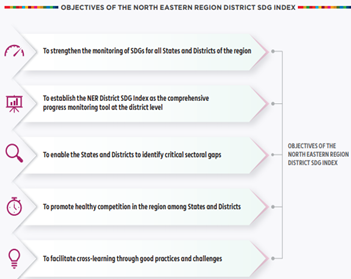
Findings of the Report
- East Sikkim has topped and Nagaland's Kiphire featured at the bottom of the Index.
- Out of the 103 districts, 64 districts belonged to the Front Runner category while 39 districts were in the Performer category.
- All districts in Sikkim and Tripura fall in the Front Runner category.
Significance of the Report
- The index offers insights into the social, economic, and environmental status of the region and its districts in their march towards achieving the SDGs.
- It is a unique policy tool which has immense potential to measure district level progress, highlight critical gaps, and facilitate resource allocation.
Sources:
New Drone Policy
In News
The Central government announced India New Drone Policy 2021 with emphasis on no security clearance along with key features.
About the News
- The central government has notified the Drone Rules 2021, which is a much more liberalised regime for unmanned aircraft systems than what existed previously.
- Under the new rules, several requirements and approvals have been abolished and this is expected to make drone operations simpler for civilian drone operators
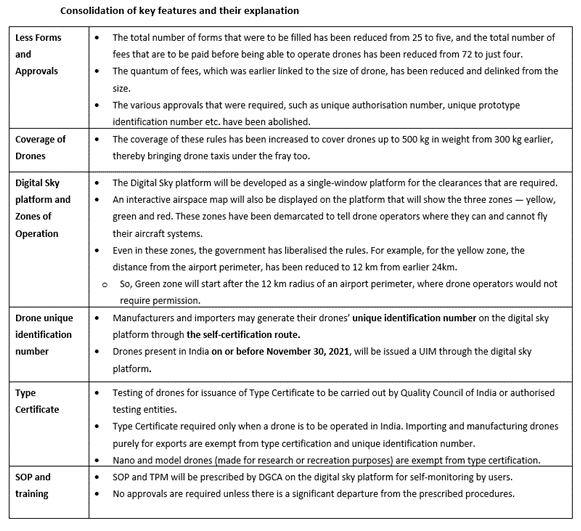
Source:
The SCALE panel recommendations
In News
Recently, the Steering Committee for Advancing Local Value-Add and Exports (SCALE), tasked with identifying steps to improve the growth of manufacturing, has released its report.
About the News
- The panel, set up under the ministry of commerce and industry, has firmed up specific suggestions for boosting exports of manufactured products in 24 priority sectors.
- These include auto components, textiles, marine products, farm and processed food items, certain electric vehicles, toys and furniture.
- The panel flagged the untapped potential of India in the auto components global trade and set an export target of $30 billion for the auto parts industry by FY26.

Recommendations made by the Committee for growth in the Manufacturing Sector
- EXIM Switch: The panel recommended to double manufacturing exports over the next five years, reduce imports by two-thirds and drive up annual domestic consumption growth.
- Develop dedicated export hubs near ports, incentivize spending on research & development and promote investment in auto electronics and semiconductor.
- Setting up export-oriented integrated plug-and-play clusters for footwear with common infrastructure facilities to enable even small players to operate with minimal costs.
- Auto Components: The panel emphasized the need to scrap import duties on principal raw materials for furniture and toys, and incentivize multinational corporations in sectors like auto components to set up mother plants in India
- FTAs: It has advised to fix anomalies in existing free trade agreements (FTAs) to increase market access of Indian products like textile and forge new ones with key economies to boost exports of manufactured products.
- Marine Trade: The Panel recommended that India should create port-based processing parks for value addition in marine products and develop cold chain infrastructure at harbours as well as airport
- Promotion: Rigorous brand-building exercise must be undertaken to promote Indian products
Need for growth in the manufacturing sector
- Employment creation: Numerous studies have estimated that every job created in manufacturing has a multiplier effect in creating 2–3 jobs in the services sector.
- Increased forex reserve: A competitive manufacturing sector will lead to a reduction in import and boost in export which will have salutary effects on forex reserve of India.
- Stagnation in growth: The share of manufacturing in the GDP has remained stagnant at around 16% for decades now, due to excessive tax burden, inadequate infrastructure and connectivity, unreliable electricity, non-availability of credit or appropriately skilled labour, lack of R&D or technology adoption.
- Even the Free Trade agreements signed by India did not lead to desirable increase in market access
Source:
Informal sector in Waste Management
In News
Various studies have revealed that in developing countries the informal sector’s contribution in recovery of materials from municipal waste is much higher than formal waste management services.
What is Informal Sector?
- The informal sector in Solid Waste management refers to individuals, families, and private sector (micro-) enterprises working in SWM services, whose activities are neither organized, financed, contracted, recognized, managed, and taxed, nor reported upon by governmental authorities.
- The engagement of formal waste management enterprises remains low, primarily due to insufficient funds, lack of legal guidance, low sectoral development and lack of tacit know-how about sustainable waste management businesses.
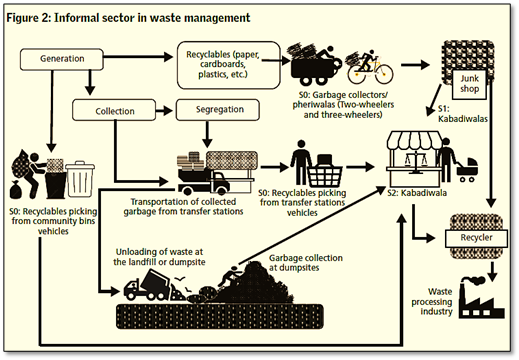
Levels of Involvement of Informal Sector in SWM
- Itinerant waste buyers (raddiwalas or pheriwalas): They purchase high-value recyclable materials such as newsgs papers, plastic, glass, metal etc. from homes and sells off well sorted clean material at a higher price to a specialized waste trader, who accumulates a particular material and sells it to recycling plants.
- Street waste pickers: They recover recyclable materials from mixed waste discarded in community bins before it is collected by formal waste collectors. Waste pickers usually sort the materials and sell each category separately to obtain a better rate.
- Waste picking from collection vehicles: Recyclable materials are recovered from vehicles transporting municipal solid waste to landfills or dumpsites.
- Waste picking from dumpsites: Waste pickers often sift through waste at dumpyards before it is treated. This kind of work is often done by communities that live in the vicinity of dumpsites to obtain a livelihood.
Impact of the Infromalization of Waste Management
- Economic Impact
-
- Poor living and working conditions: People working in the informal waste sector live in close proximity to dumpsites, and work under unhygienic and unhealthy Often, they have no access to drinking water or public toilets.
- Unstable income source: A majority of formal waste collectors earn marginally higher than poverty-line The poverty of waste pickers is not temporary but chronic as they have no opportunity to enter the formal sector.
- Financial Loss to the government: Solid wastes typically contains base materials in the form of scrap, like ferrous and non-ferrous metals, plastics and glass that can be potentially recycled for various gainful applications. As collection and recycling are not effectively executed in many parts of the country, the cycle of Circular Economy breaks.
- Waste Mafia: This multi-crore industry born of trash is a thriving business that employs thousands of small businessmen and ragpickers from the area. They often collude with civic body officials who allow them to smuggle expensive garbage.
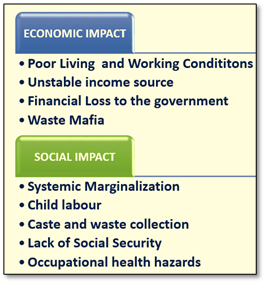
- Social Impact:
- Systemic Marginalization: Despite the crucial role informal waste workers play in sustainable recycling, they continue to be subjected to systemic marginalization and have to deal with exploitative social behaviour. Waste picking is not seen as a decent and dignified occupation.
- Child labour: Reportedly, around 20 per cent of the 51,000 street children in Delhi are waste pickers. Child waste pickers are vulnerable to exploitation, child abuse and trafficking and have poor knowledge of occupational and environmental hazards.
- Caste and waste collection: As per an Oxfam report, these occupations are influenced by the social institutions of gender, caste and religion as it compels members of Dalit and Muslim communities to opt for these jobs.
- Lack of Social Security: The informal sector is often not officially approved, recognized and acknowledged. Waste pickers are not covered under any labour legislation. As a result, they do not benefit from social security and medical insurance schemes.
- Occupational health hazards: Community waste bins and dumpsites act as breeding grounds for various types of bacterial and viral diseases. Sanitary waste, domestic hazardous waste and household biomedical waste may cause various infections.
What can be done about it?
- Identification and Inclusion: It is crucial for ULBs to identify ragpickers and kabadiwalas in their operational area, catalogue them, and create their socio-economic profiles. This will help analyze the opportunities and obstacles in SWM.
- Partnership between social enterprises and ULBs: There has to be collaboration between ULBs, the informal sector, NGOs working with waste pickers, and CSR intervention of private enterprise in order to integrate waste pickers in solid waste management systems.
- Training and awareness programmes: In order to ensure a better health and safety regimen for waste pickers, NGOs should train waste pickers on the importance of using protective equipment and follow safe and ergonomic work practices.
- Legal protection measures: Recognition of their work and legal status to them as legitimate service suppliers, will be the first step for inclusion of these workers in formal setup.
- Ensuring occupational health and safety: The municipality and its formal and informal organizational partners should ensure that workers have access to safety gear. The Ministry of Urban Development provides detailed guidance on the appropriate safety gear.
- Implementation, evaluation and monitoring: The three important tasks in monitoring the progress are: Periodic reporting, Audit programmes and Annual progress ULB needs to ensure that they are making progress against annual goals
Conclusion:
Everyone has the right to work, to free choice of employment, to just and favourable conditions of work and to protection against unemployment. Everyone, without any discrimination, has the right to equal pay for equal work. Everyone who works has the right to just and favourable remuneration ensuring for himself and his family an existence worthy of human dignity, and supplemented, if necessary, by other means of social protection. — Article 23 of The Universal Declaration of Human Rights
Question: What are the modes of involvement of the informal sector in solid waste management. Discuss the socio-economic impact of informalization of the waste management system.
Sources:
This Day in History- Krakatoa Island
The most powerful volcanic eruption in recorded history occured on Krakatoa Island, Indonesia on August 27, 1883. The explosion was heard 3,000 miles away and it threw five cubic miles of earth 50 miles into the air, created 120-foot tsunamis and killed 36,000 people. For the next two months, similar explosions would be witnessed by commercial liners and natives on nearby Java and Sumatra.

Source:
Image of the Day- Umbrella Grass Species
The Delhi government has installed a unique water filter plant in Sanjay Van Lake, by planting around 4,000 umbrella grass species plant on floating rafters set up in the lake. The lake will be cleaned using a combination of floating wetlands and aeration technology. The plants will help avoid the dust and stink coming from the water.
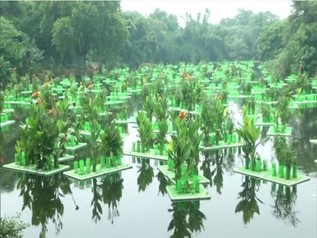
Source:
PM SVANidhi programme
- Context: The Reserve Bank of India has extended the Payments Infrastructure Development Fund (PIDF) scheme to street vendors covered under PM SVANidhi in tier 1, 2 centres.
- The PM Street Vendor's AatmaNirbhar Nidhi (PM SVANidhi) scheme aims to provide affordable collateral free working capital loans of up to Rs 10,000 of one year tenure to approximately 50 lakh street vendors to resume their livelihood that has been adversely affected due to Covid-19 lockdown.
- The benefits of the scheme include:
- On timely/early repayment of the loan, an interest subsidy @ 7% per annum will be credited to the bank accounts of beneficiaries through Direct Benefit Transfer on quarterly basis.
- The scheme promotes digital transactions through cashback incentives up to an amount of Rs. 100 per month.
- The vendors can avail the facility of escalation of the credit limit on timely/ early repayment of loan.
- It was launched by the Ministry of Housing and Urban Affairs in 2020. Small Industries Development Bank of India (SIDBI) is the implementation agency of the scheme and the duration of the scheme is until March 2022.

Source:
- RBI extends PIDF scheme to street vendors covered under PM SVANidhi in tier 1, 2 centres
- RBI extends PIDF scheme to street vendors under PM SVANidhi programme
- PM SVANidhi
Image source:
Survey to Chart India Specific Sizes
- Context: An India size survey, titled INDIAsize, has been officially launched to chart India specific clothing sizes.
- As a part of a larger “fibre-to-fashion” initiative, the aim of the project is to introduce a new standardized size chart for India in the ready-to-wear clothing sector.
- The new sizing chart will have a size identification number, which will be created by mapping, categorisation and defining of the body size and type.
- It is a joint initiative of the Ministry of Textiles and National Institute of Fashion Technology (NIFT).

Source:
Image Source:
eSanjeevani
- Context: The Union Health Ministry’s National Telemedicine Service eSanjeevani has conducted more than 1 crore tele consultations in India.
- eSanjeevani is a doctor to patient telemedicine system that has been deployed nationally at 1,55,000 Health and Wellness Centres under Ayushman Bharat Scheme of Government of India.
- Through eSanjeevani OPD, anyone can seek medical advice and medication through audio and video interactions, based at remote locations as well.
- Users must have a laptop or a personal computer with a web camera connected with Internet (1Mbps) and a working mobile phone to send/receive OTPs by SMS.

Source:
- How to use eSanjeevani OPD Portal
- Health Ministry's E-Sanjeevani Initiative Completes 1 Crore Tele-consultations
Image Source:
SAMRIDH Scheme
- Context: Ministry of Electronics & Information Technology has launched SAMRIDH
- The Scheme aims to create a conducive platform for Indian Software Product start-ups to enhance their products and secure investments for scaling their business.
- The initiative will provide funding support to the startups and help in bringing skill sets together which will help them to become successful.
- The programme aims to further the Indian start-up growth which has seen the emergence of 63 Unicorns and is now the third largest Unicorn hub
- It will help in accelerating 300 start-ups by providing customer connect, investor connect, and international immersion in next three years.
- An investment of up to ₹40 lakh to the start-up based on current valuation and growth stage of the Start-Up will be provided through selected accelerators.
- It will also facilitate equal matching investment by the accelerator/investor.
Source:
- IT Minister Shri Ashwini Vaishnaw’s vision for startups takes shape of SAMRIDH Scheme
- Govt launches SAMRIDH Scheme to help startups in the early stage
Image source:
Time to redesign capitalist enterprises
Essence: In recent times, governments have been accusing the capitalist enterprises of not serving the interests of the nation. Previously, capitalist enterprises have worked with the government to generate wealth. With the collapse of USSR and increased support to the Washington Consensus, capitalist enterprises went into an over-drive, neglecting society and the environment. Now the ravages of the natural environment and societal well-being have become too large to ignore. Therefore, human well-being and natural stability must become central to models of national as well as corporate governance.
Why you should read this editorial?
- To understand about the clash of interest between the government and the capitalist enterprise.
- To understand the need for the capitalist enterprises to reinvent.
- To know about the concept of social enterprises.
Source:
Covering the gaps in the game of data
Essence: The article highlights the importance of data and how its absence often leads to indecisiveness or faulty decisions. Availability of adequate data is an asset for any government leading to more pragmatic decisions. For data to be useful, it needs to be homogeneous, accurately collected and measured. Absence of correct data creates more problems. For example, during the pandemic there was wrong perception about the states with higher testing and reporting rates that they were unable to control the spread of the disease. We need to immediately to pay attention to the statistical vacuum created due to delays and data suppression.
Why you should read this article?
- To understand the significance of empowering State government in data collection.
- To understand how the lack of data can be a menace for the economy.
Source:
Has the economic fallout of the pandemic affected different communities in different ways?
Essence: Recent surveys highlight the changes in the employment structure and earnings of workers of different communities and genders in rural and urban areas during pandemic period compared to the previous periods. Survey suggests that the differential impact of the pandemic on the labour market has not been inconsequential. This shows that the pandemic may not have a class or community bias, but its economic fallout certainly seems to have it.
Why should you read this article?
- To understand the impact of pandemic on different communities and gender of rural and urban India.
- To understand why pandemic has impacted different community and gender differently.
Source:
Rethinking education: Karnataka’s Vidyagama programme
Background
- Present day education focusses on rote learning, competition and increasing the rank in the examination.
- Pedagogy is framed in such a manner to cut children off from the world around them.
Karnataka’s Vidyagama programme
- Outdoor learning circles: A group of committed teachers created informal, outdoor learning circles.
- Activity based learning: Teaching was not bound by blackboards and textbooks, but learning interactively, through stories and activities.
- It has drawn inspiration from Santiniketan model of learning.
Benefits from the model
- Modify the education: If integrated into regular schooling, such learning environments can bring new life into our education system.
- Inquiry-based learning: Children can discuss what they saw, experienced and learned
- New perspective: It can rejuvenate the learning by being open to fresh winds and ideas
Quote
- “Tell me and I forget, teach me and I may remember, involve me and I learn.” – Benjamin Franklin
Source:
Share the article
Get Latest Updates on Offers, Event dates, and free Mentorship sessions.

Get in touch with our Expert Academic Counsellors 👋
FAQs
UPSC Daily Current Affairs focuses on learning current events on a daily basis. An aspirant needs to study regular and updated information about current events, news, and relevant topics that are important for UPSC aspirants. It covers national and international affairs, government policies, socio-economic issues, science and technology advancements, and more.
UPSC Daily Current Affairs provides aspirants with a concise and comprehensive overview of the latest happenings and developments across various fields. It helps aspirants stay updated with current affairs and provides them with valuable insights and analysis, which are essential for answering questions in the UPSC examinations. It enhances their knowledge, analytical skills, and ability to connect current affairs with the UPSC syllabus.
UPSC Daily Current Affairs covers a wide range of topics, including politics, economics, science and technology, environment, social issues, governance, international relations, and more. It offers news summaries, in-depth analyses, editorials, opinion pieces, and relevant study materials. It also provides practice questions and quizzes to help aspirants test their understanding of current affairs.
Edukemy's UPSC Daily Current Affairs can be accessed through:
- UPSC Daily Current Affairs can be accessed through Current Affairs tab at the top of the Main Page of Edukemy.
- Edukemy Mobile app: The Daily Current Affairs can also be access through Edukemy Mobile App.
- Social media: Follow Edukemy’s official social media accounts or pages that provide UPSC Daily Current Affairs updates, including Facebook, Twitter, or Telegram channels.

